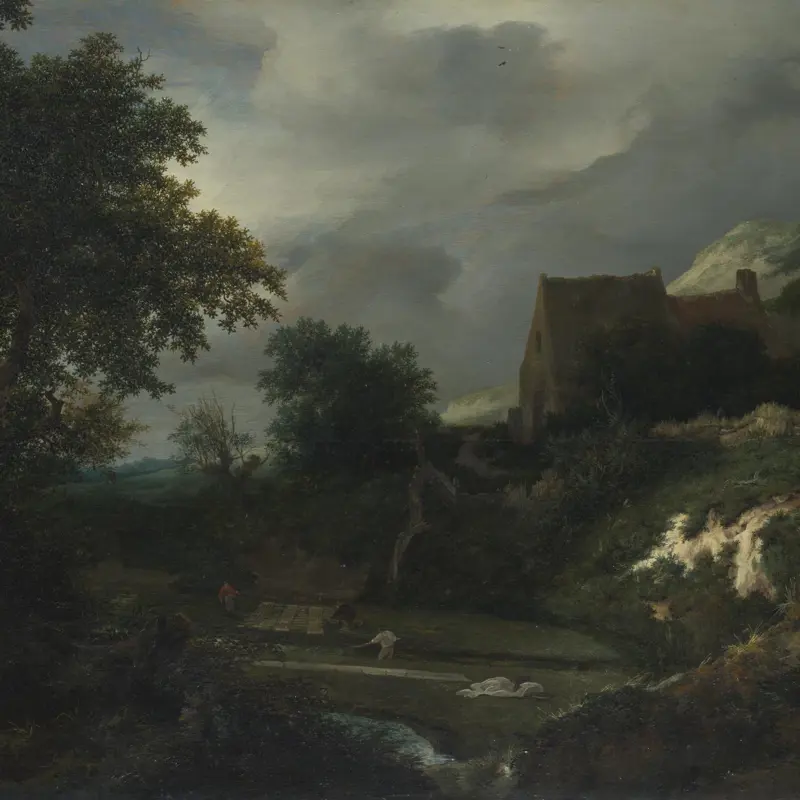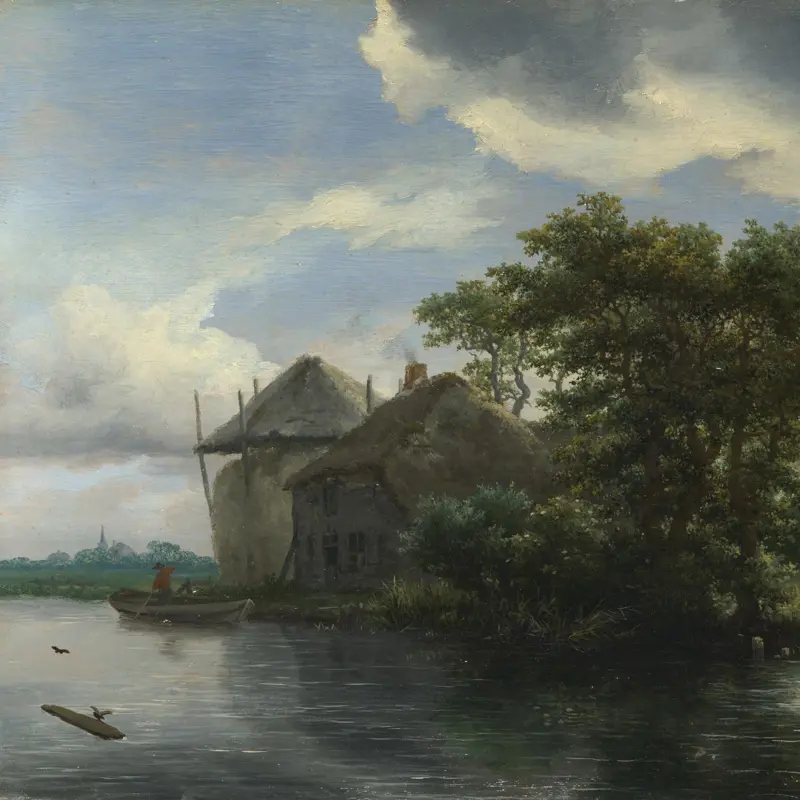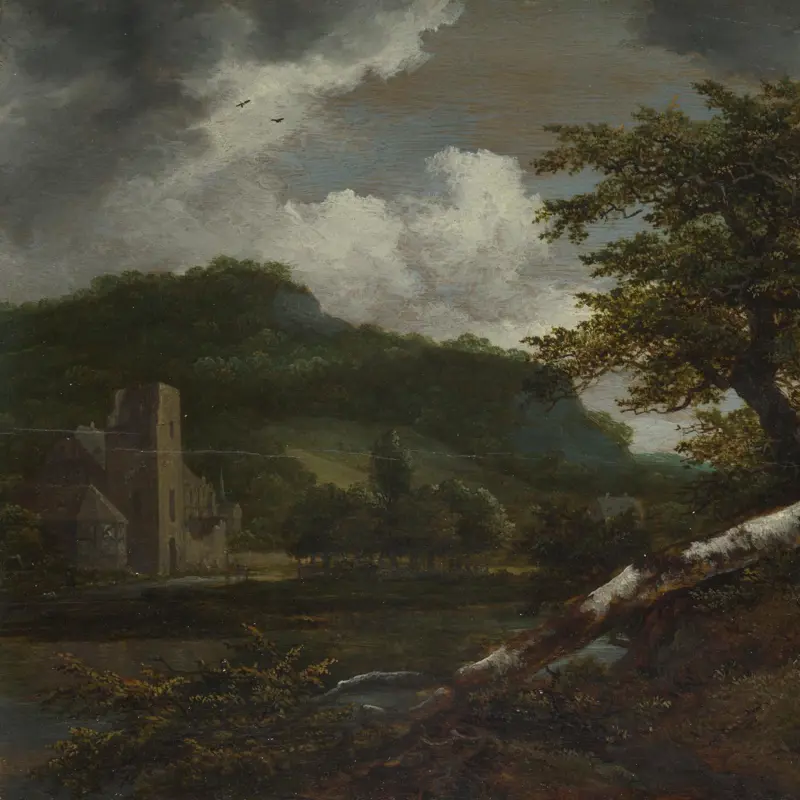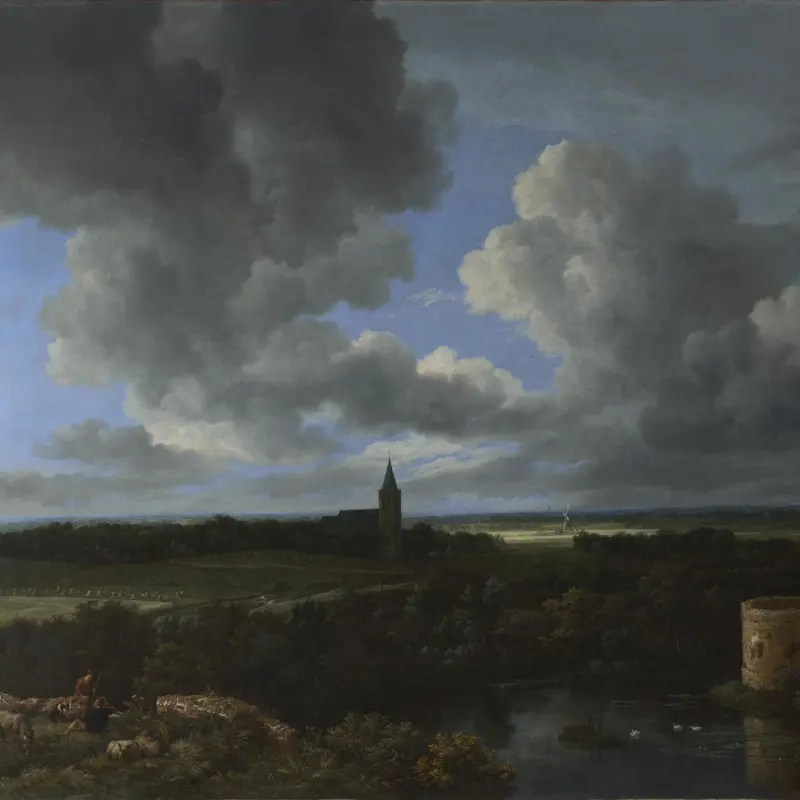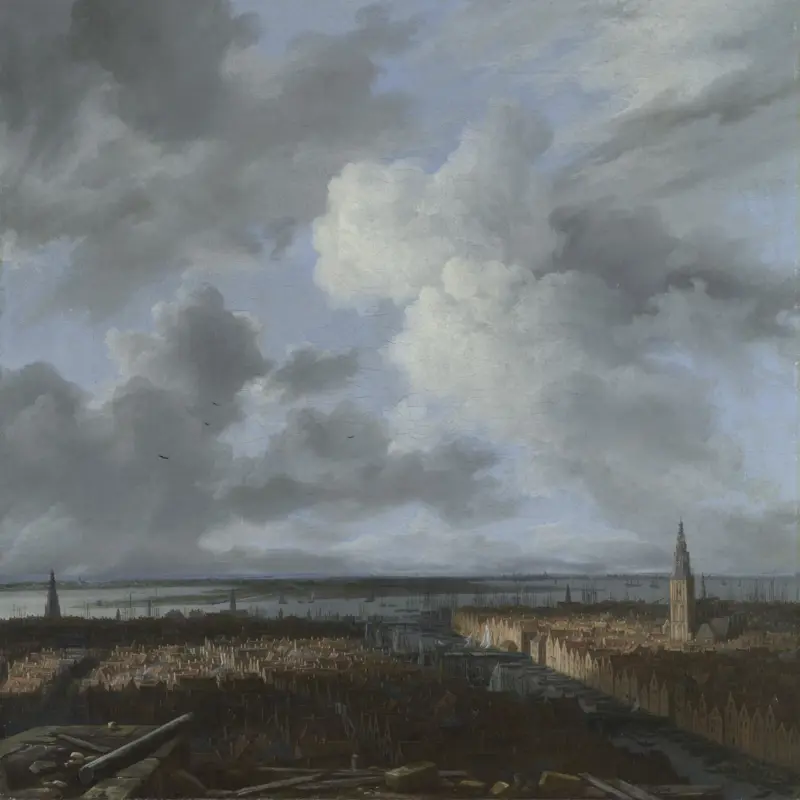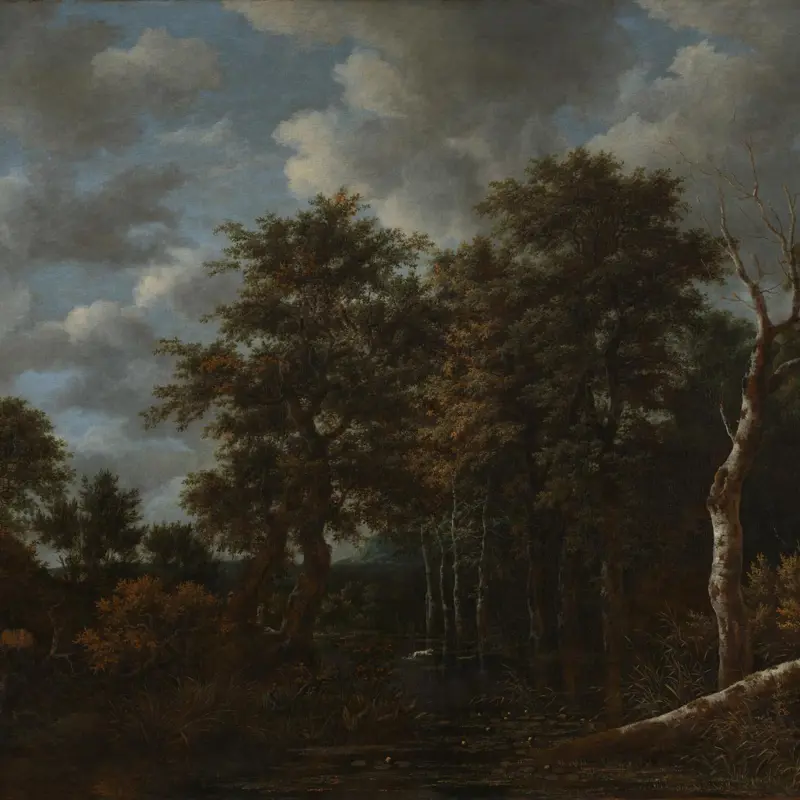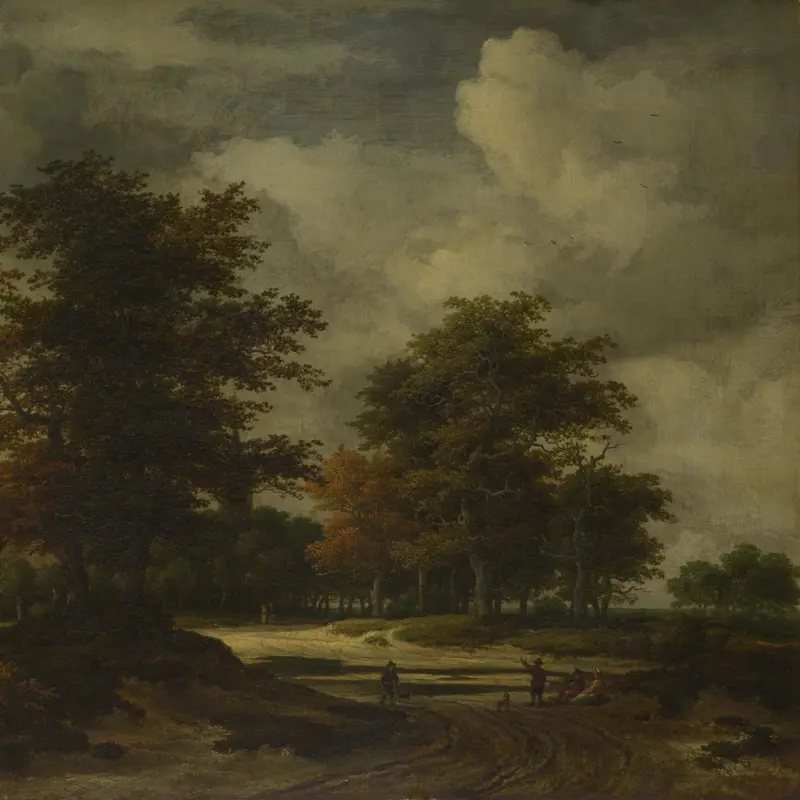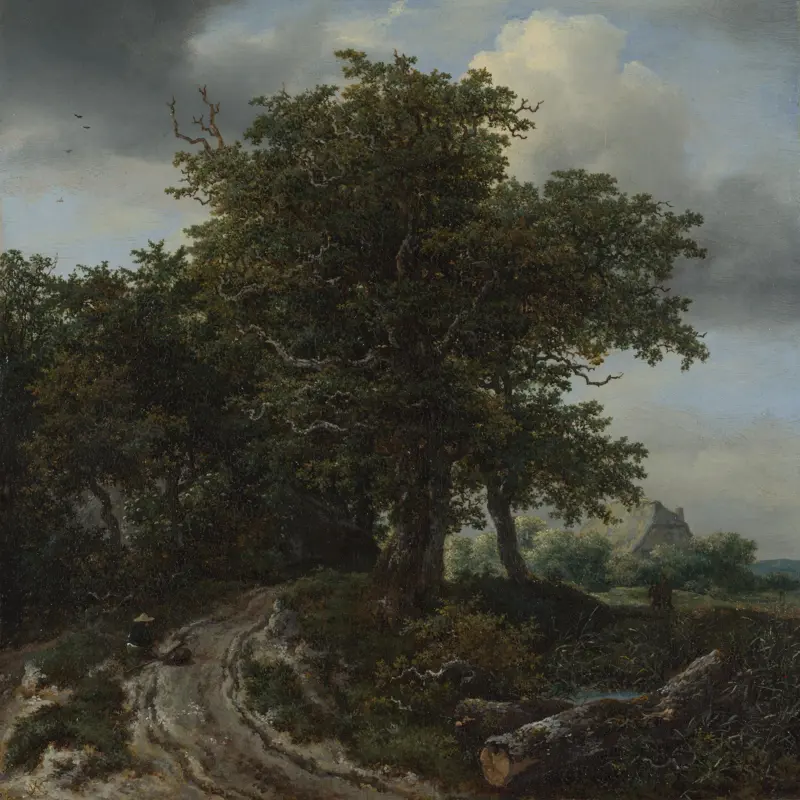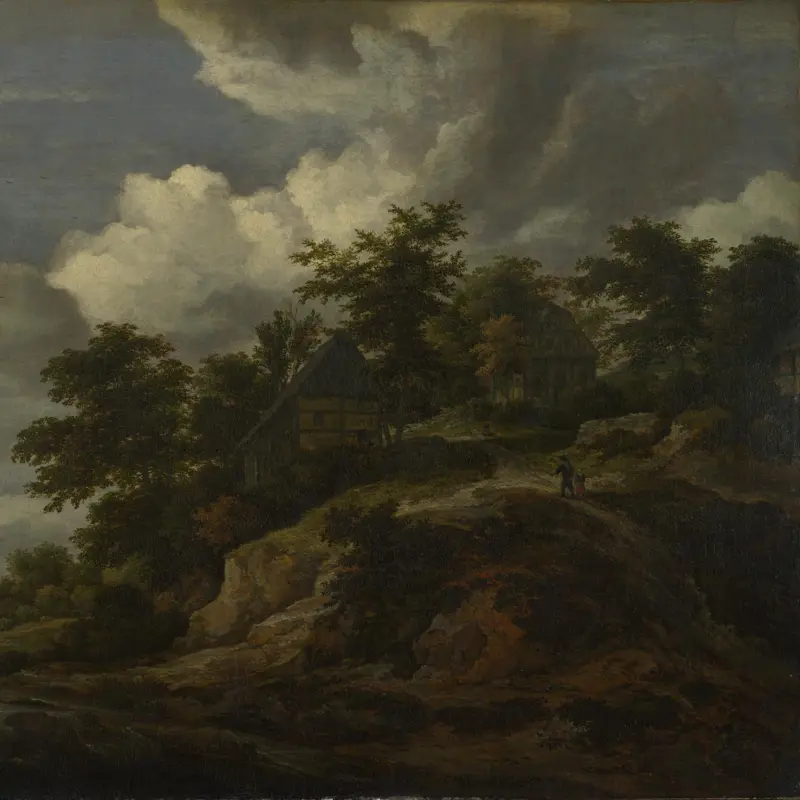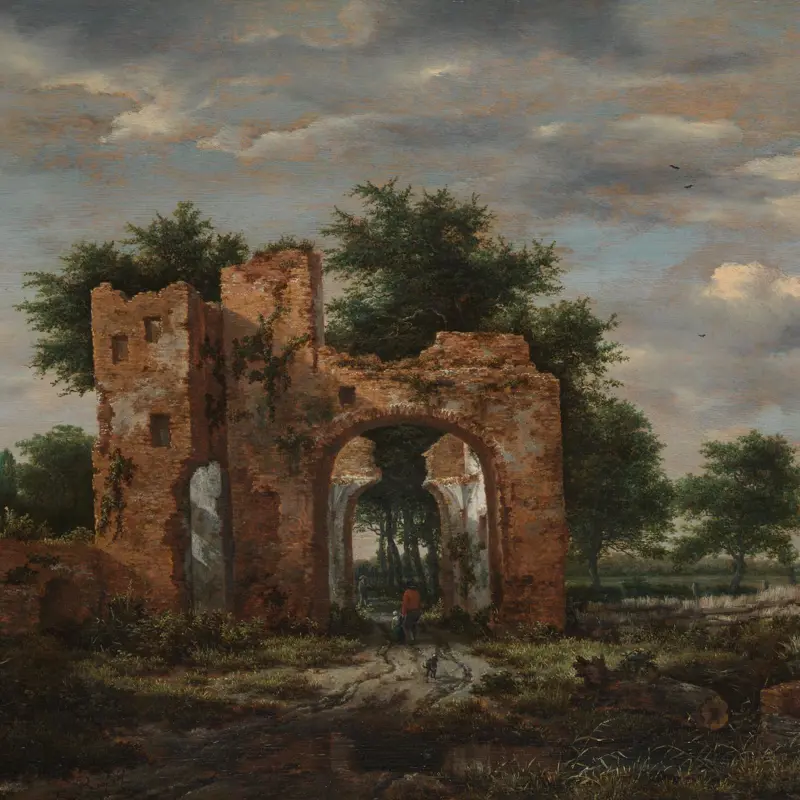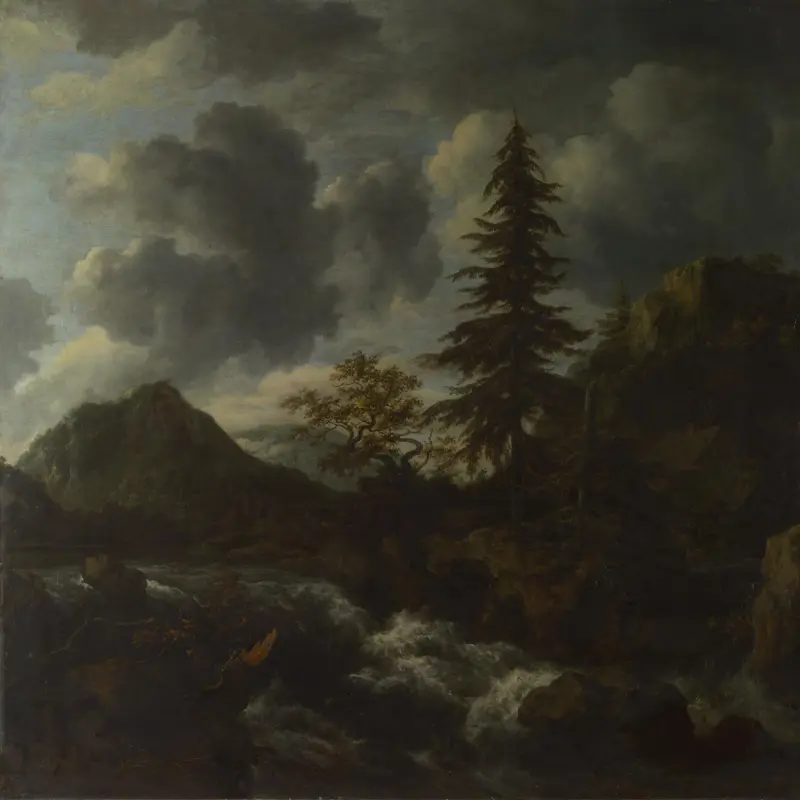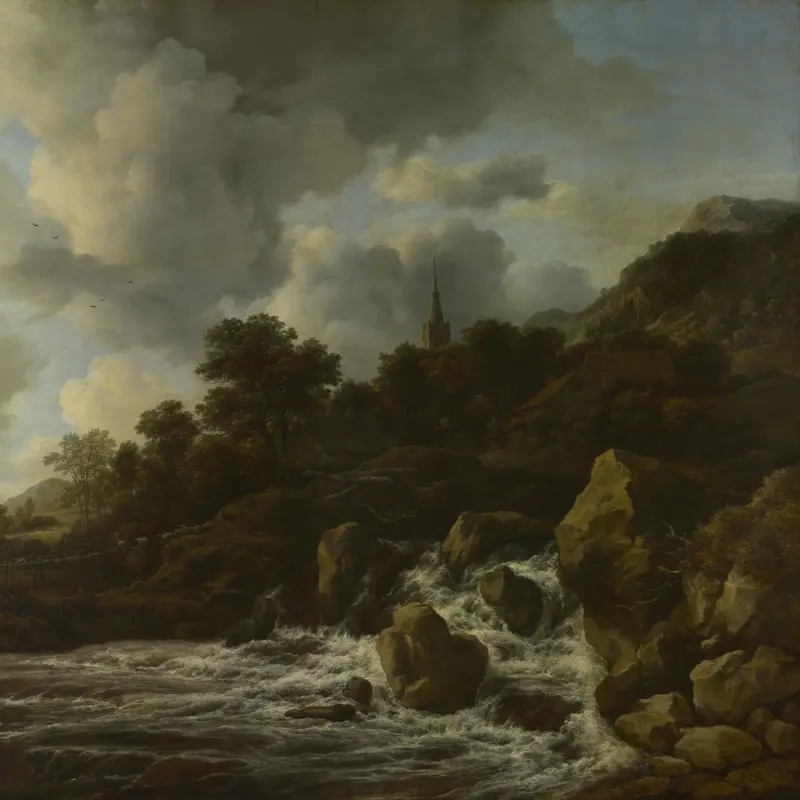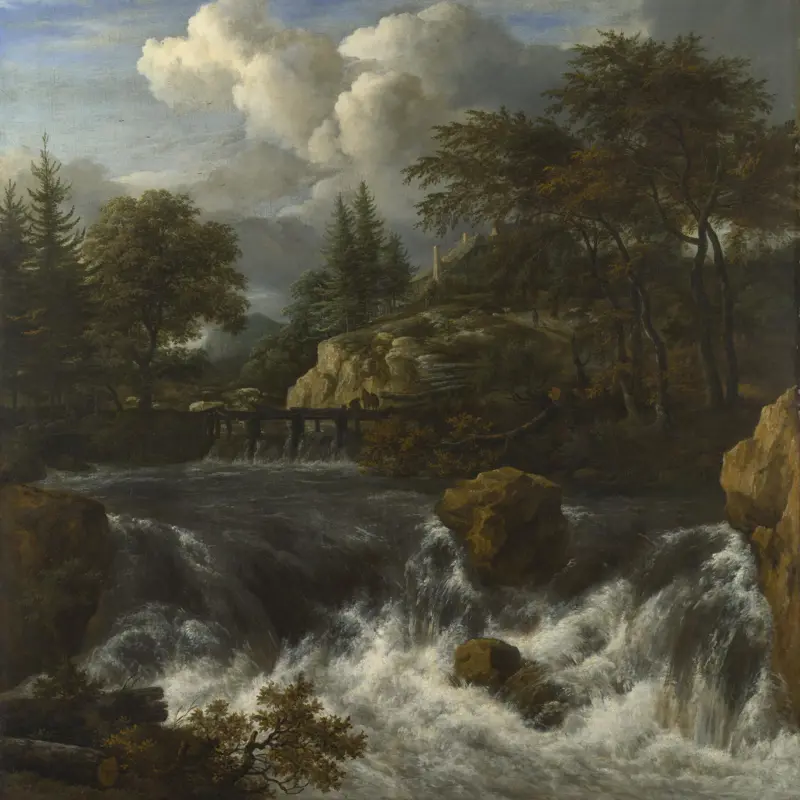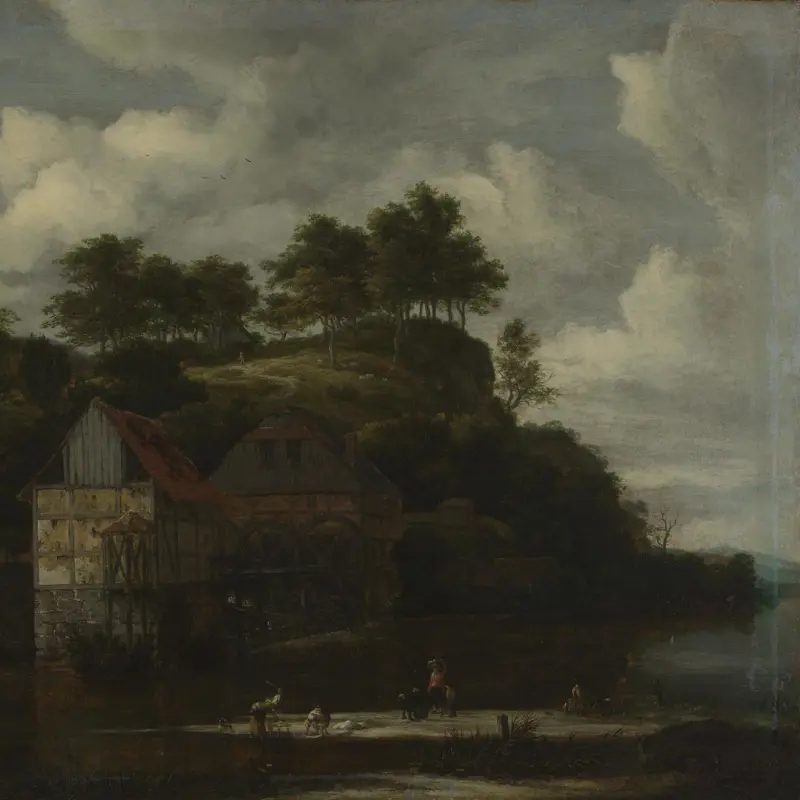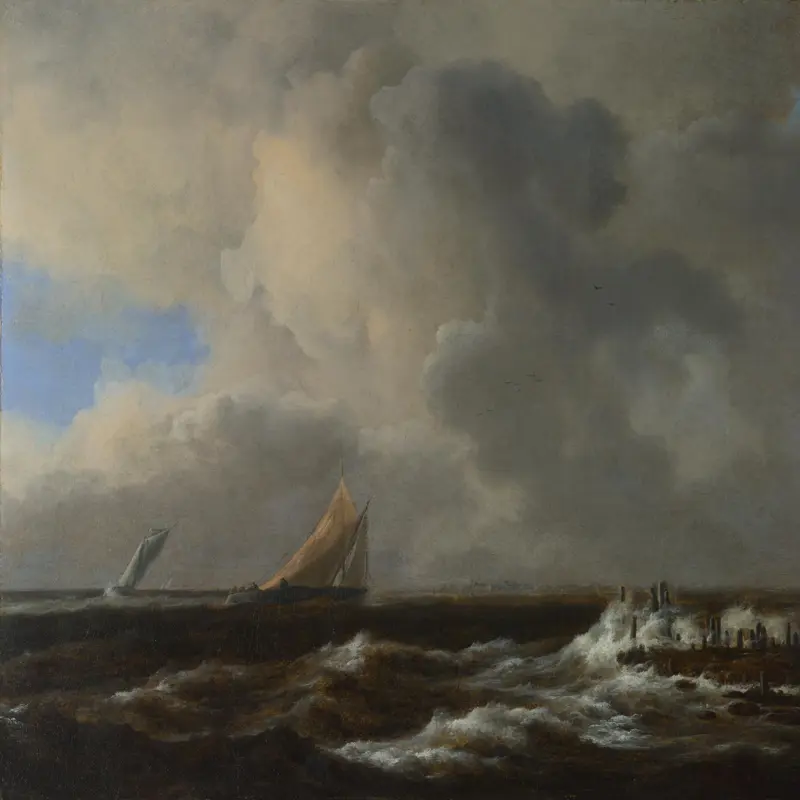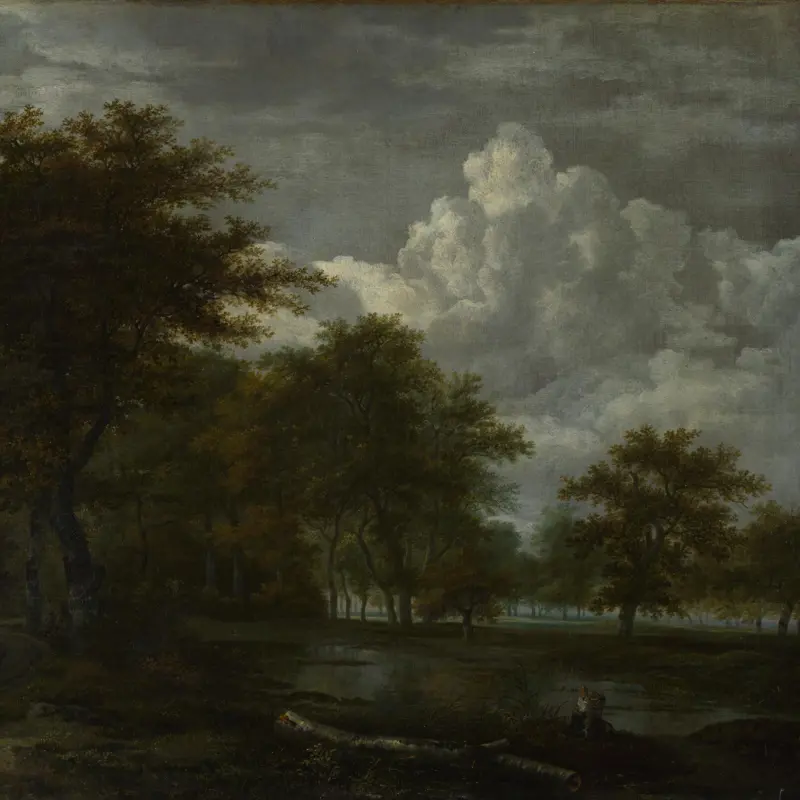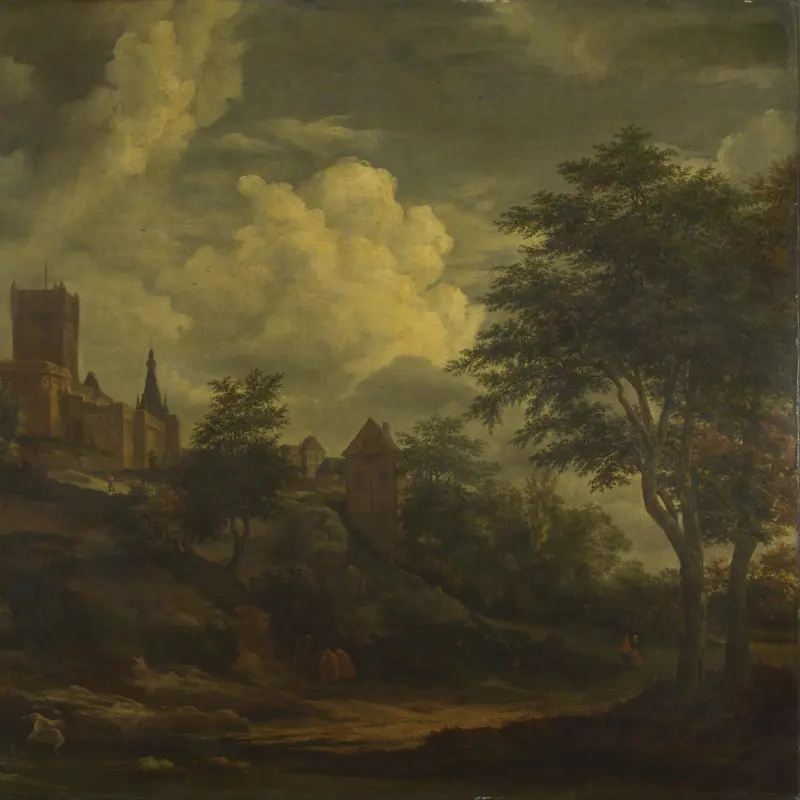Jacob van Ruisdael, 'The Shore at Egmond-aan-Zee', about 1675
About the work
Overview
The tide is ebbing at Egmond-aan-Zee, leaving a pattern of swirls in the still-wet sand. You can sense the outward sweep and undertow of the tide before the little waves tumble back towards the shore.
The people lingering on the beach aren't fishermen, like the silhouetted figures near the boats. They are middle-class people out for a stroll. The women’s hair is protected by hoods, their lacy overskirts tied back with ribbons; the men wear enormous brimmed hats, breeches and stockings. One young man whisks a woman up in his arms – he pretends to throw her into the waves and she kicks her feet in protest. His hat falls off and his hair flies as their dog leaps behind them.
These figures may be by Gerrit van Battem, who worked with Jacob van Ruisdael in the 1670s, sometimes adding figures to some of his landscapes. It was a common practice at the time for artists to collaborate in this way.
Key facts
Details
- Full title
- The Shore at Egmond-aan-Zee
- Artist
- Jacob van Ruisdael
- Artist dates
- 1628/9? - 1682
- Date made
- About 1675
- Medium and support
- Oil on canvas
- Dimensions
- 53.7 × 66.2 cm
- Inscription summary
- Signed
- Acquisition credit
- Bought, 1893
- Inventory number
- NG1390
- Location
- Not on display
- Collection
- Main Collection
Provenance
Additional information
Text extracted from the ‘Provenance’ section of the catalogue entry in Neil MacLaren, revised and expanded by Christopher Brown, ‘National Gallery Catalogues: The Dutch School: 1600–1900’, London 1991; for further information, see the full catalogue entry.
Exhibition history
-
2025Longing for EgmondStedelijk Museum Alkmaar28 June 2025 - 2 November 2025
Bibliography
-
1960Maclaren, Neil, National Gallery Catalogues: The Dutch School, 2 vols, London 1960
-
1991Maclaren, Neil, revised by Christopher Brown, National Gallery Catalogues: The Dutch School, 1600-1900, 2nd edn (revised and expanded), 2 vols, London 1991
-
2001
C. Baker and T. Henry, The National Gallery: Complete Illustrated Catalogue, London 2001
About this record
If you know more about this work or have spotted an error, please contact us. Please note that exhibition histories are listed from 2009 onwards. Bibliographies may not be complete; more comprehensive information is available in the National Gallery Library.

